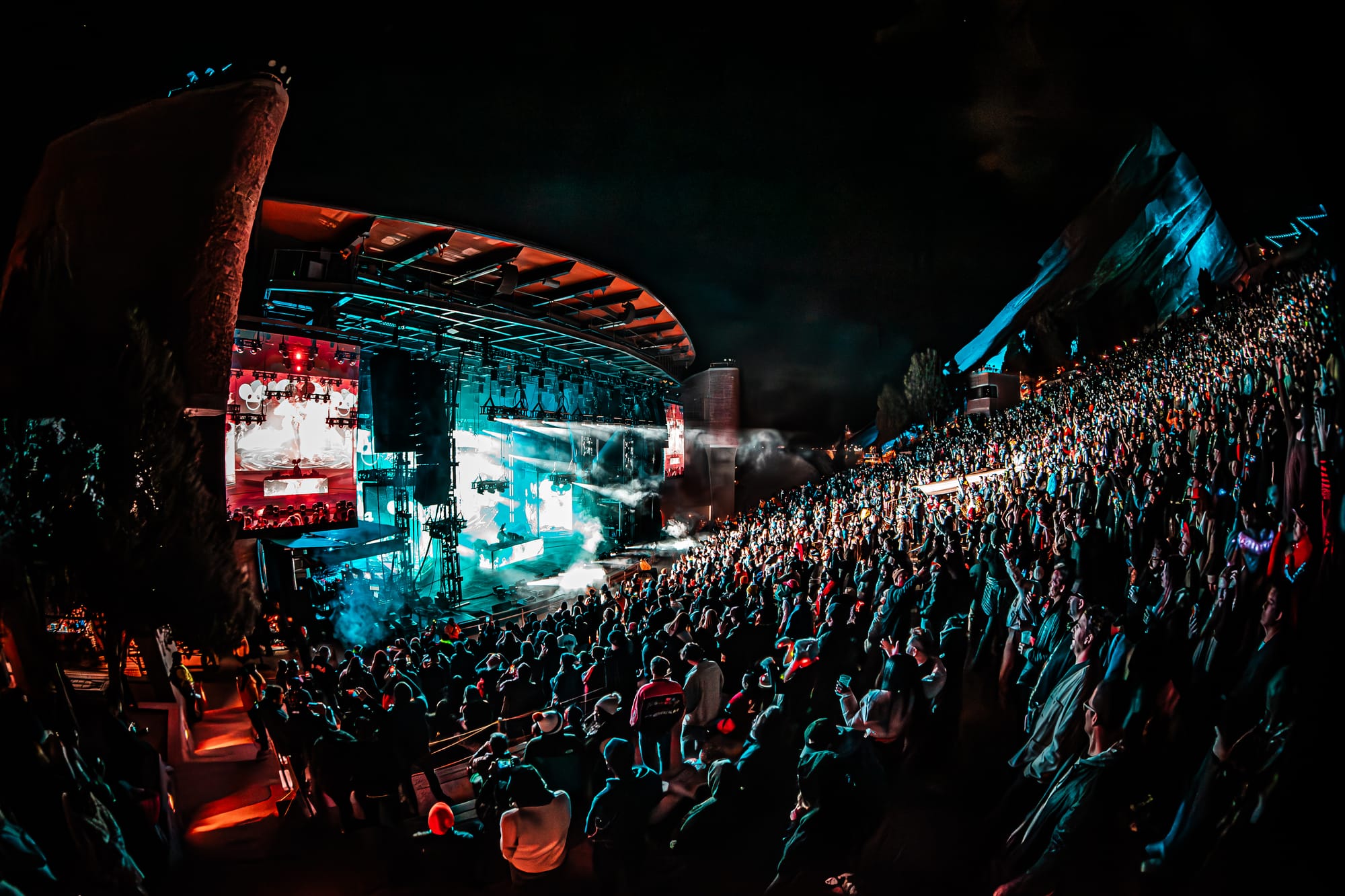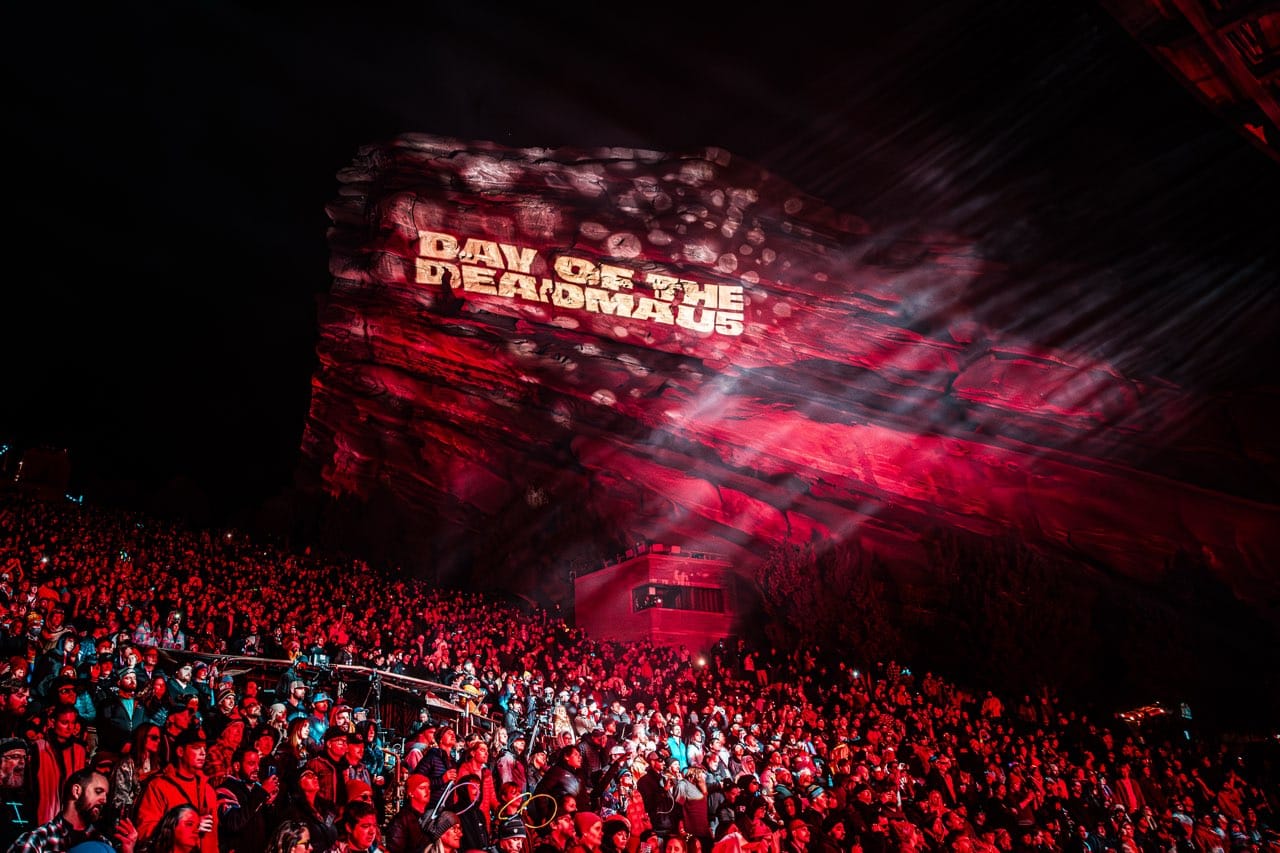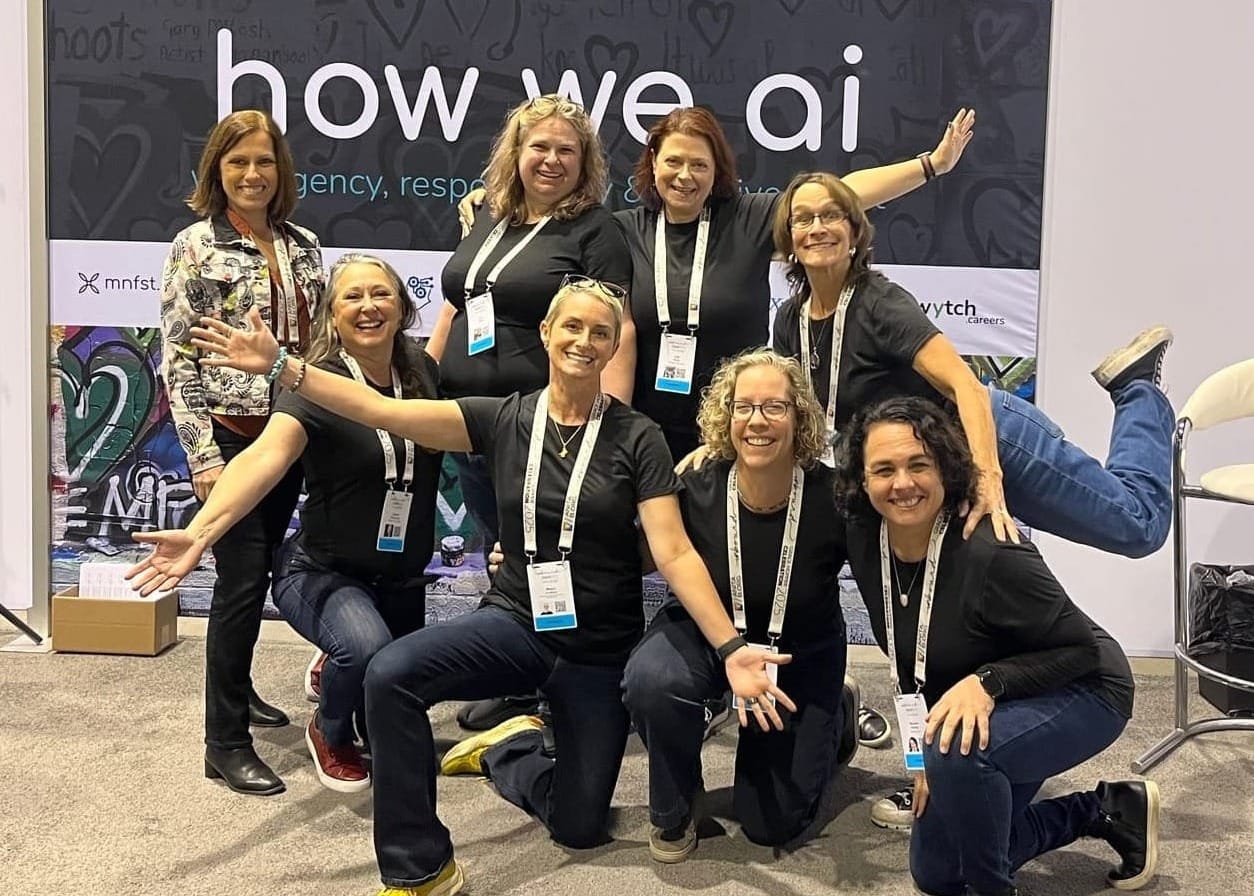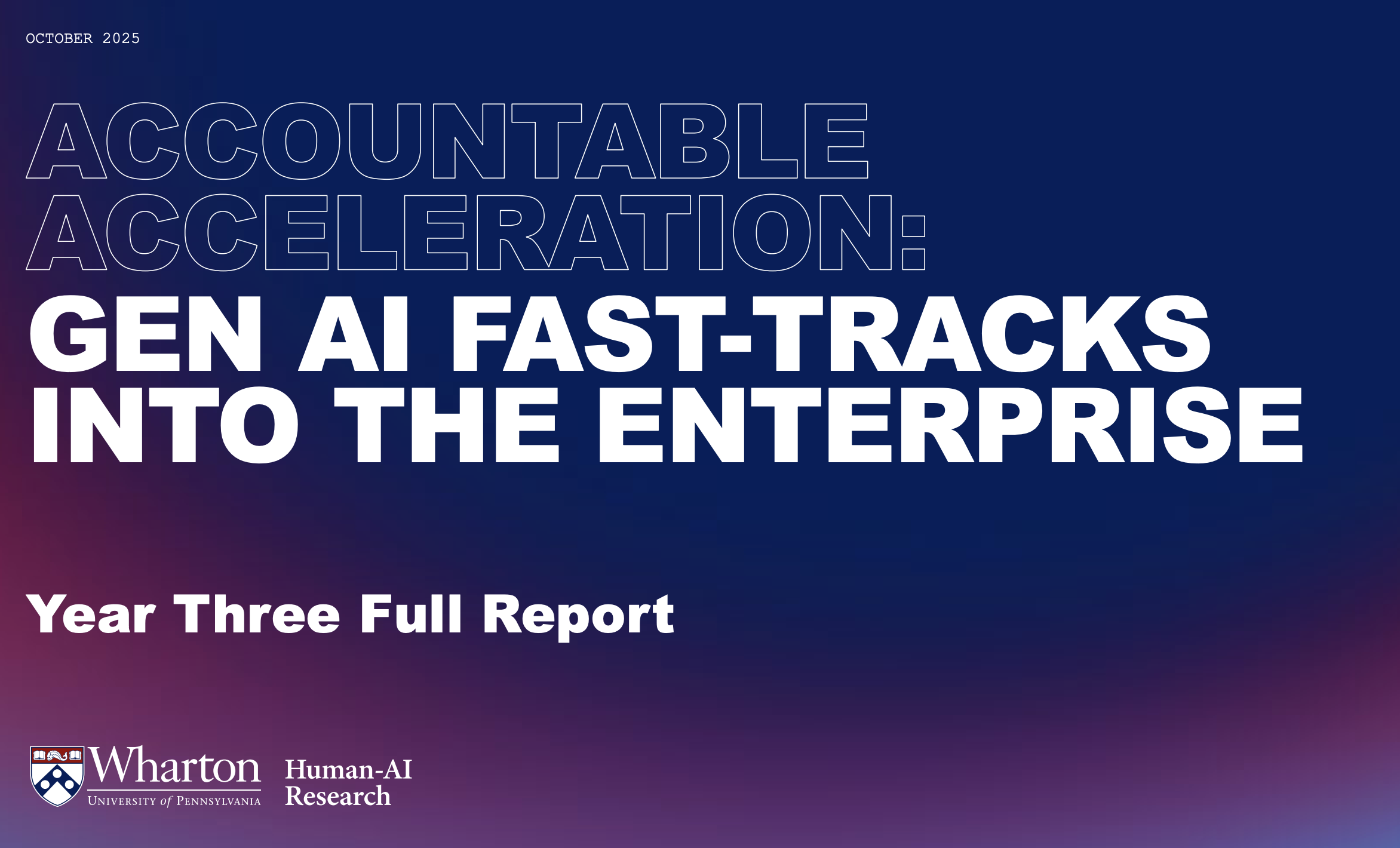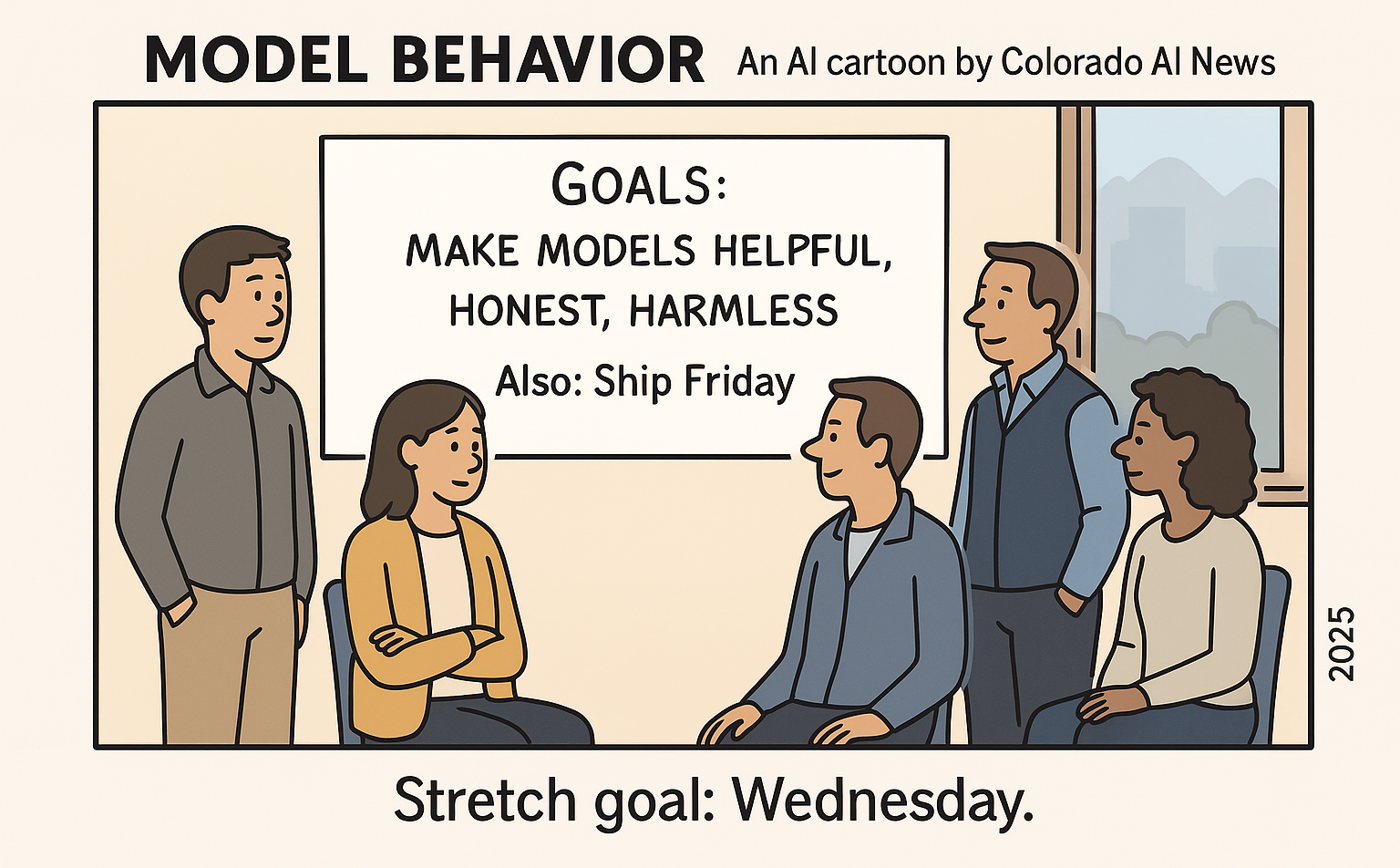Over two nights on November 7–8, electronic music producer deadmau5 staged five-hour-plus marathon shows at Red Rocks, bringing his "day of the deadmau5" production back to one of his favorite venues for the seventh time. At various points, he brought two Figure 02 humanoid robots on stage, offering a close-up look at how hybrid human-robot performances land in a cultural setting. (Given the enthusiasm of the audience, they landed.)
Ahead of the weekend, deadmau5 (aka Joel Zimmerman) told the Denver Gazette, “I love Colorado. I don’t know, the air is different there.” That's unarguable, of course, and the unparalleled open-air amphitheater that is Red Rocks only accentuates the positive. Perhaps the Morrison landmark is truly where long-form electronic shows can breathe. This year’s Colorado stop consisted of performances by multiple musicians, more than one of whom was an alter ego of Zimmerman.
Skylar Grey also made an unforgettable appearance, singing the deadmau5 anthem, "My Heart Has Teeth." While it may take a lot to upstage Ms. Grey, most attendees would no doubt agree that the four occasions when the humanoid robots joined deadmau5 on stage were equally striking.

When fans first saw two human-sized Figure AI units flanking Zimmerman, that marked the live performance debut of the Figure 02 robots. Widely shared video clips captured the moment, and robotics coverage the next day called it a pop-culture milestone, while noting the motions were almost certainly pre-programmed, rather than controlling the music in real time.
Wait, what’s a deadmau5?
Joel Zimmerman – better known as deadmau5 (pronounced “dead mouse”) – is a Canadian electronic producer with a long run of festival-scale shows. His signature “mau5head” helmet, which emerged in the late 2000s (with increasingly sophisticated LED versions), made the project instantly recognizable and helped elevate him into global headliner territory. He regularly appears in DJ Mag’s list of the Top 100 DJs.
And what’s a Figure AI?
Figure AI is a Sunnyvale, California–based humanoid-robotics company founded in 2022 and led by CEO Brett Adcock. In early 2024 it raised $675 million at a $2.6 billion valuation from backers that included Microsoft, the OpenAI Startup Fund, Nvidia, and Jeff Bezos, alongside a collaboration with OpenAI.
Figure’s factory cred comes from pilot work with BMW Manufacturing: Figure 02 robots ran trial jobs inside BMW’s Spartanburg, South Carolina plant to see whether a general-purpose robot could meet automotive standards for safety, uptime, and repeatable cycle times. BMW later said the tests were successful but no deployment was scheduled, a reminder that moving from a good demo to everyday production is a separate, harder milestone.
What it all means
While some might see putting humanoid robots on one of the country's most iconic stages as a stunt, it may be more productive to think of it as a signal. It's a meaningful sign showing just how quickly robots are moving from lab demos and factory pilots into the everyday culture that most people actually see: concerts, festivals, and live TV, for starters.
Even if the motions were choreographed, the effect is real: Thousands of fans watched human-robot interaction play out in a setting built for emotion, not engineering. For Figure AI, it's brand-building and stress-testing under bright lights. For deadmau5, it's a way to make “the future of performance” feel literal, not theoretical.
It also helps reset expectations. Robots do not need to “play the music” to matter on stage; they only need to fit safely and convincingly into a human production. Yes, the "day of the deadmau5" performances were about entertainment, but the near term is about reliability, timing, and audience trust – skills that also matter on a factory floor. The weekend’s debut, paired with Figure AI’s industrial ambitions, hints at a two-way street: Lessons from manufacturing inform live performances, and public performances help audiences understand what robots can (and cannot) do.
Finally, this is a preview of where entertainment is heading. Expect more artists to use robots as cast members, not novelties, and expect more venues to write safety and operations playbooks for machines sharing space with crews and crowds. The wins will be subtle at first – smoother cues, tighter timing, fresh stage pictures – but they add up. When robots stop being “the story” and become part of the toolbox, that's when the technology has truly arrived.
